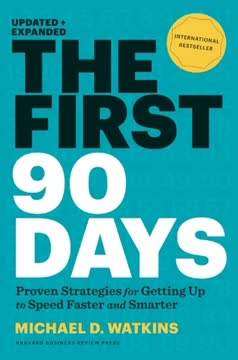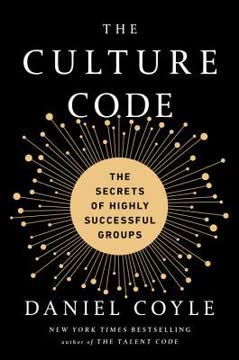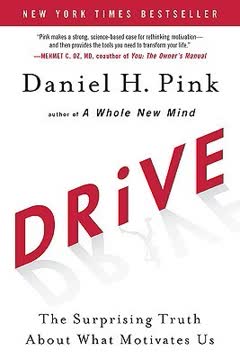Key Takeaways
1. Master the art of asking powerful questions to become a more effective leader
You need a way to manage the temptation to jump into fixing that opening challenge.
The coaching habit. This book introduces a new approach to leadership, centered around asking powerful questions rather than providing immediate solutions. By shifting from advice-giving to curiosity-driven inquiry, leaders can unlock their team's potential and foster greater autonomy and growth.
Seven essential questions. The core of this approach consists of seven carefully crafted questions:
- What's on your mind? (The Kickstart Question)
- And what else? (The AWE Question)
- What's the real challenge here for you? (The Focus Question)
- What do you want? (The Foundation Question)
- How can I help? (The Lazy Question)
- If you're saying Yes to this, what are you saying No to? (The Strategic Question)
- What was most useful for you? (The Learning Question)
By mastering these questions, leaders can create more meaningful conversations, help their team members find their own solutions, and ultimately become more effective in their roles.
2. Use the "Kickstart Question" to initiate meaningful conversations
"What's on your mind?" is a question that says, Let's talk about the thing that matters most.
Open-ended yet focused. The Kickstart Question, "What's on your mind?", serves as a powerful conversation starter. It's open enough to allow the other person to bring up what's most important to them, yet focused enough to avoid aimless small talk.
The 3P model. To further focus the conversation, use the 3P model:
- Projects: Content of the situation
- People: Relationships and interactions
- Patterns: Behaviors and ways of working
By using this question and model, leaders can quickly dive into meaningful discussions and address the most pressing issues their team members face.
3. Employ the "AWE Question" to generate more options and insights
"And what else?"—the AWE Question—has magical properties.
Unlock potential. The AWE Question, "And what else?", is a simple yet powerful tool to generate more ideas and insights. By asking this question multiple times, leaders can help their team members uncover options they might not have considered initially.
Benefits of the AWE Question:
- Generates more options, leading to better decisions
- Tames the leader's "Advice Monster" by encouraging curiosity
- Buys time for the leader to process information
- Creates space for deeper thinking and reflection
Aim to ask this question at least three times in a conversation to fully explore the topic at hand.
4. Focus on the real challenge with the "Focus Question"
Focus on the real problem, not the first problem.
Dig deeper. The Focus Question, "What's the real challenge here for you?", helps leaders and team members identify the core issue at hand. Often, the first problem presented is not the real challenge that needs addressing.
Addressing common pitfalls:
- Proliferation of Challenges: Too many problems presented at once
- Coaching the Ghost: Discussing a third party instead of the real issue
- Abstractions & Generalizations: Vague, high-level discussions
By using the Focus Question, leaders can cut through these foggy situations and hone in on the true challenge, leading to more effective problem-solving and decision-making.
5. Uncover true desires with the "Foundation Question"
Taking responsibility for your own freedom is notoriously difficult to do.
Adult-to-adult conversations. The Foundation Question, "What do you want?", is at the heart of mature, productive relationships in the workplace. It encourages people to take responsibility for their own needs and desires.
Challenges in answering:
- People often don't know what they want
- It can be difficult to ask for what we want
- Communicating desires clearly can be challenging
- Hearing "No" as an answer can be uncomfortable
By regularly asking this question, leaders can foster a culture of clarity, directness, and mutual respect, leading to more effective collaboration and problem-solving.
6. Avoid overcommitment with the "Lazy Question"
How can I help?
Clarify requests. The Lazy Question, "How can I help?", serves two important purposes. First, it forces the other person to make a clear, specific request. Second, it prevents the leader from jumping into action without fully understanding the situation.
Benefits of being "lazy":
- Encourages clear communication
- Prevents unnecessary work or misguided assistance
- Allows the leader to assess whether they can or should fulfill the request
- Empowers team members to think through their own needs
By embracing this "lazy" approach, leaders can avoid overcommitment and ensure their efforts are truly helpful and aligned with their team's needs.
7. Make strategic decisions using the "Strategic Question"
A Yes is nothing without the No that gives it boundaries and form.
Thoughtful commitments. The Strategic Question, "If you're saying Yes to this, what are you saying No to?", helps leaders and team members make more intentional decisions. It encourages consideration of the trade-offs involved in any commitment.
Types of "No" to consider:
- No of omission: What options are automatically eliminated by saying Yes?
- No of commission: What must be stopped or changed to make the Yes possible?
By regularly asking this question, leaders can help their teams prioritize effectively, avoid overcommitment, and ensure that their efforts are aligned with strategic goals.
8. Embed learning with the "Learning Question"
What's essential is to interrupt the process of forgetting.
Double-loop learning. The Learning Question, "What was most useful for you?", helps create a moment of reflection and insight at the end of a conversation or meeting. This question encourages "double-loop learning," where people not only address the immediate issue but also create a learning moment about the process itself.
Benefits of the Learning Question:
- Assumes the conversation was useful, framing it positively
- Encourages identification of key takeaways
- Makes learning personal and subjective
- Provides feedback to the leader
- Reinforces the value of the interaction
By consistently using this question, leaders can help their team members extract maximum value from every interaction and continually improve their skills and knowledge.
9. Build new habits to transform your leadership approach
If you define your new habit in an abstract and slightly vague way, you won't get traction.
The New Habit Formula. To effectively change behavior and implement the coaching habit, leaders should use the following formula:
- Identify the trigger: When this happens...
- Identify the old habit: Instead of...
- Define the new behavior: I will...
Keys to successful habit formation:
- Be specific about the trigger and new behavior
- Keep the new habit short (less than 60 seconds)
- Practice deeply through repetition and mindfulness
- Plan for setbacks and how to get back on track
By consciously building new habits around these powerful questions, leaders can transform their approach to management and coaching.
10. Embrace the neuroscience of engagement to foster better relationships
Five times a second, at an unconscious level, your brain is scanning the environment around you and asking itself: Is it safe here? Or is it dangerous?
The TERA model. Understanding the neuroscience of engagement can help leaders create an environment that fosters better relationships and productivity. The TERA model outlines four key drivers of engagement:
- Tribe: Are you with me or against me?
- Expectation: Do I know what's going to happen?
- Rank: What's my relative importance?
- Autonomy: Do I have a choice?
Applying TERA in leadership:
- Ask questions to increase the sense of tribe and autonomy
- Provide clear expectations when possible
- Respect and elevate others' status through active listening
- Offer choices and encourage independent problem-solving
By considering these neurological drivers in their interactions, leaders can create a more engaging, productive, and positive work environment for their teams.
Last updated:
FAQ
What's "The Coaching Habit" about?
- Purpose of the Book: "The Coaching Habit" by Michael Bungay Stanier is about transforming managers and leaders into more coach-like figures by encouraging them to stay curious longer and rush to action and advice-giving more slowly.
- Core Concept: The book introduces a simple yet challenging habit: asking more questions and giving less advice to foster better leadership and management.
- Practical Approach: It provides a fast and practical read, offering seven essential questions that can be used to improve coaching skills in everyday interactions.
- Not Just for Coaches: The book is designed for anyone in a leadership role, not just professional coaches, aiming to enhance their ability to support and develop their teams effectively.
Why should I read "The Coaching Habit"?
- Improve Leadership Skills: The book offers practical tools to become a more effective leader by adopting a coaching mindset.
- Enhance Team Performance: By using the seven questions, leaders can help their teams become more self-sufficient and focused on meaningful work.
- Reduce Overwhelm: It provides strategies to manage workload better and avoid becoming a bottleneck in the organization.
- Build Better Relationships: The book emphasizes the importance of adult-to-adult conversations, helping leaders build more authentic and productive relationships with their teams.
What are the key takeaways of "The Coaching Habit"?
- Seven Essential Questions: The book revolves around seven questions that help leaders coach more effectively by focusing on what truly matters.
- Habit Building: It emphasizes the importance of building a coaching habit through understanding triggers, practicing deeply, and planning for setbacks.
- Focus on Development: The book distinguishes between coaching for performance and coaching for development, encouraging leaders to focus on the latter for long-term growth.
- Engagement and Impact: By asking the right questions, leaders can increase engagement, reduce dependency, and have a greater impact on their teams.
What are the seven essential questions in "The Coaching Habit"?
- The Kickstart Question: "What's on your mind?" to open up meaningful conversations.
- The AWE Question: "And what else?" to explore more options and insights.
- The Focus Question: "What's the real challenge here for you?" to identify the core issue.
- The Foundation Question: "What do you want?" to clarify needs and desires.
- The Lazy Question: "How can I help?" to offer support without taking over.
- The Strategic Question: "If you're saying Yes to this, what are you saying No to?" to prioritize effectively.
- The Learning Question: "What was most useful for you?" to reinforce learning and reflection.
How does "The Coaching Habit" suggest building a coaching habit?
- Identify Triggers: Recognize the moments that prompt old habits and use them to initiate new behaviors.
- Practice Deeply: Focus on small, specific actions that can be repeated and refined over time.
- Plan for Setbacks: Accept that mistakes will happen and have a plan to get back on track.
- Use the New Habit Formula: Combine triggers, old habits, and new behaviors to create lasting change.
What is the difference between coaching for performance and coaching for development in "The Coaching Habit"?
- Coaching for Performance: Focuses on addressing and fixing specific problems or challenges, often short-term and task-oriented.
- Coaching for Development: Shifts the focus to the person dealing with the issue, aiming for long-term growth and learning.
- More Powerful Conversations: Development coaching is more impactful as it encourages self-awareness and personal growth.
- Application of the 3P Model: Helps identify whether the focus should be on projects, people, or patterns to facilitate development.
How does "The Coaching Habit" address the issue of overdependence in teams?
- Encourages Self-Sufficiency: By asking questions instead of giving answers, leaders help team members find their own solutions.
- Reduces Bottlenecks: Leaders avoid becoming the sole problem-solvers, allowing the team to function more independently.
- Increases Autonomy: Team members gain a sense of mastery and control over their work, leading to higher motivation.
- Breaks Vicious Circles: The book identifies and provides strategies to break cycles of overdependence, overwhelm, and disconnection.
What role does neuroscience play in "The Coaching Habit"?
- Risk and Reward Response: The book explains how the brain constantly assesses situations as safe or dangerous, influencing engagement.
- TERA Quotient: Focuses on increasing Tribe, Expectation, Rank, and Autonomy to create a rewarding environment.
- Impact on Engagement: By asking questions, leaders can create a sense of safety and engagement, enhancing team performance.
- Learning and Memory: The book uses neuroscience to explain how asking questions can improve memory retention and learning.
What are some of the best quotes from "The Coaching Habit" and what do they mean?
- "Tell less and ask more." This quote encapsulates the book's core message of shifting from giving advice to asking questions to empower others.
- "We live in the world our questions create." It highlights the transformative power of questions in shaping our understanding and interactions.
- "What people think of as the moment of discovery is really the discovery of the question." This emphasizes the importance of asking the right questions to unlock insights and solutions.
- "Nothing is stronger than habit." It underscores the book's focus on building new habits to create lasting change in leadership behavior.
How does "The Coaching Habit" suggest handling the Advice Monster?
- Recognize the Urge: Be aware of the tendency to jump in with advice and solutions, often prematurely.
- Use the AWE Question: "And what else?" helps manage the impulse to give advice by encouraging further exploration.
- Stay Curious: Focus on asking questions and listening to the answers to keep the conversation open and productive.
- Practice Restraint: Develop the habit of holding back advice until it's truly needed, allowing others to find their own solutions.
How can "The Coaching Habit" help with strategic decision-making?
- The Strategic Question: "If you're saying Yes to this, what are you saying No to?" helps prioritize and focus on what truly matters.
- Clarifies Commitments: Encourages clear and committed Yes decisions, supported by necessary No actions.
- Avoids Overwhelm: Helps leaders and teams manage workload by making conscious choices about priorities.
- Aligns with Goals: Ensures that decisions are aligned with strategic objectives and long-term goals.
What additional resources does "The Coaching Habit" offer for further learning?
- My One Best Question Series: Features videos from business leaders and thought leaders sharing their best questions.
- Top-Shelf Management Books: A curated list of recommended books for further reading on self-management, organizational change, and strategy.
- Box of Crayons Lab: Offers insights and research sources for deeper understanding of the book's concepts.
- Online Tools and Videos: Provides access to videos and tools to help embed the learning and apply the book's principles in real life.
Review Summary
The Coaching Habit receives mixed reviews, with many praising its practical approach to coaching through seven key questions. Readers appreciate its concise format and actionable advice, finding it useful for improving leadership and communication skills. Some criticize the book for being repetitive or lacking depth. Many readers value the emphasis on asking questions rather than giving advice. The book's companion videos and references to other works are generally well-received. Overall, it's considered a helpful resource for those looking to develop a coaching mindset.
Similar Books










Download PDF
Download EPUB
.epub digital book format is ideal for reading ebooks on phones, tablets, and e-readers.








